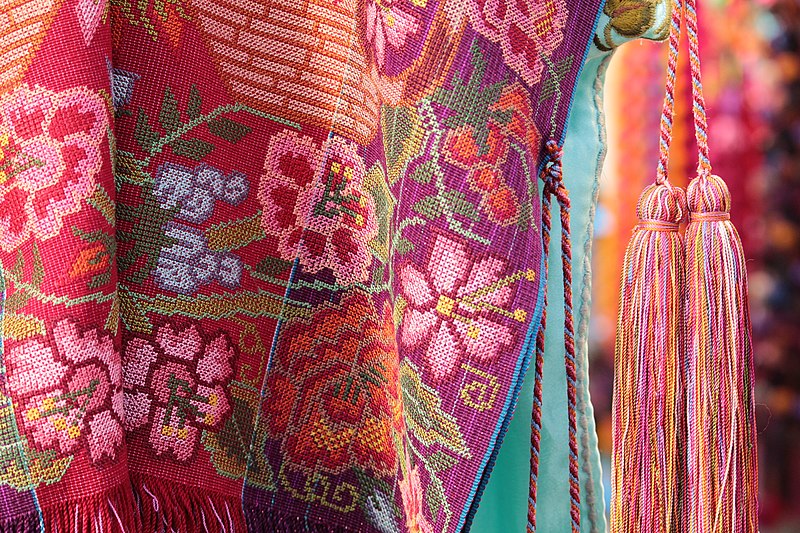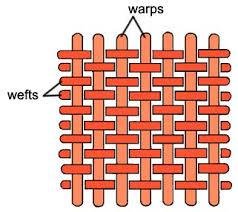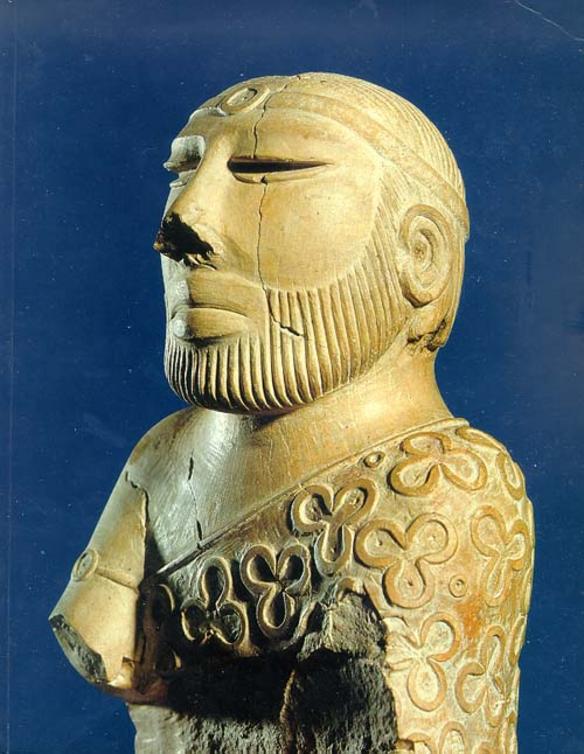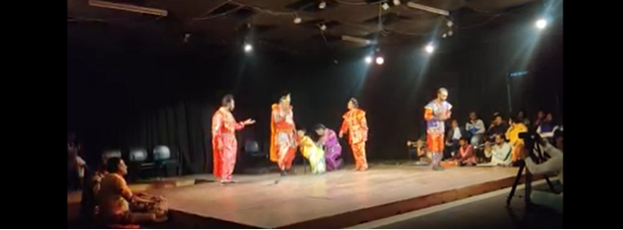–Vagish K Jha

It is such an experience that is impossible to forget. Our history teacher entered the class with a tape recorder. We were wondering as she plugged in the device and quietly played a song. The haunting voice of the singer still rings a strange connection in our hearts. It was Kumar Gandharva singing this song:
झीनी झीनी
झीनी झीनी बीनी चदरिया॥
काहे कै ताना काहे कै भरनी
कौन तार से बीनी चदरिया॥
She asked us to tell if we knew the words like ‘taana’ and ‘bharni’. She then brought out a piece of cloth from her pocket and showed us the weaving while explaining the meaning of the song:
Subtly, delicately
He wove this sheet!
What is its warp? What is its weft?
With what fiber was this woven?
“This is a song by Kabir Das, a 15th century Indian saint-poet”, she said. What did it have to do with our history lesson? She, as if reading our minds, made another statement, “You see, India was not just divided in 1947. In fact, it was the second division. Earlier in 1905, it was divided for the first time by George Curzon, the then Viceroy of India. Bengal was divided by language and religion: the western half would be primarily Hindu, and the eastern half would be primarily Muslim. As a response to this on August 7, 1905, a formal proclamation was made at the Calcutta Town Hall to boycott foreign goods and rely on Swadeshi, the Indian-made, products. The movement focused on reviving domestic production, encouraging indigenous industries and the spirit of Swadeshi.
A large number of handloom weavers took part in the movement. Indians started boycotting British goods for Indian products, even though they were costlier. The impact was so strong that Britain registered a 20% fall in its product sales. The trio of Lal-Bal-Pal played a key role in this movement to popularize the use and consumption of indigenous products from soil to sweets. Adopting Indian handloom in place of the foreign made cloth was one of the major planks of the Swadeshi Movement.”
We were listening to her with rapt attention as she went on giving live examples of what is meant by Handloom. This was the power of multisensory appeal of teaching.
To mark the 100th anniversary of the Swadeshi Movement, the Union Government declared August 7 as the National Handloom Day. On this day, we honour our handloom-weaving community and highlight the contribution of this sector to the socio-economic development of our country. We reaffirm our resolve to protect our handloom heritage and to empower the handloom weavers and workers financially and instill pride in their exquisite craftsmanship. Handloom weaving is an aesthetic, intricate art passed on from generations taking forward India’s cultural heritage, legacy, and empowering the lives and economy of the country.
The Ministry of Textiles has been annually conferring various awards like Sant Kabir Award, National Award and National Merit Certificates, towards excellence in weaving, design development, and marketing efforts.

“Let me see if you know your own clothes better now,” said our teacher. “Do you know how it is woven? What is warp and waft?”
Before we could say anything, she took out a piece of cloth from her pocket and passed it on to each one of us. “Observe this cloth very carefully so that you understand the pattern of weaving”, she said. She also displayed a diagram on the board to make us understand the warp and waft yarns in a fabric. “Feel the cotton thread in your hands to appreciate how our ancestors developed this technique through innumerable years of trial and error to be able to weave a cloth from the cotton yarn,” she tickled our imagination as we felt and explored the cloth piece.

To understand this better we needed to go back many thousand years, said our teacher with an impish smile. The Indian handloom has a great reputation. It has a long history. Cotton originated in India. We have evidence that it was first cultivated in the Indus Valley in 3200 BCE. Textile fragments were found in the Mohenjodaro (the ‘Mound of the Dead’), circa 2600–1900 BCE. Look at the figurine from the Indus Valley and his floral cloth. It included a variety of textiles using cotton from a plant closely related to Gossypium arboreum. By the year 600 BCE, cotton started to be traded in Mesopotamia, reaching Europe in the fourth century BCE.
Our teacher told us another fascinating story of the fourteenth-century English writer and traveler Sir John Mandeville. He mentioned in his travelogue – “in India grew a wonderful tree which bore tiny lambs on the ends of its branches. These branches were so pliable that they bent down to allow the lambs to feed when they were hungry.” Our teacher said, “what Sir John described was a cotton tree, whose illustration came to be one of the wonders of the Orient. Europeans knew cotton textiles and by this time they had access to raw cotton from the Near East. But hardly many of them had actually seen a cotton ball with their eyes.”
She continued, “By the modern times, Indian muslin had become a prized commodity. But the arrival of the British on the scene created a major disruption in the traditional practice of handloom. The Swadeshi movement envisaged the model of a village as an economic unit that guided the leaders in the metropolis to determine the future line of action. It also laid the foundation of the Indian Independence Movement. The Swadeshi idea was to raise the political consciousness of the people and inspire the rural folk to work for development.
The popularization of the idea of swadeshi was done through lectures as well as Jatras and songs, which were more effective with the masses. Jatra literally means travel. It is a moving theatre group very popular in rural Bengal. Today it is a dying performing art form that is surviving by the State patronage. Recently I had the fortune of attending the Jatra Utsav in Dhaka. During the time of freedom struggle Jatra was hugely popular and many prestigious artists carried forward this tradition. Manamohan Chakravorty was one such popular artiste of that time. A song often sung by Manamohan Chakravorty in his Jatras, spread like a wildfire”.

Here in the classroom, our teacher broke into singing the song:
Chhere dao reshmi churi, Bangalnari
Kobhu hate ar porona
Discard those silken bangles, 0, women of Bengal,
Never wear them again
She recited another jatra song by Mukundadas that had become very popular during those days. It goes like this:
Ram Rahim na juda karo
Monta khanti rakhoji
Desher katha bhab bhaire
Desk amader Mataji
Don’t keep apart Ram and Rahim
Keep your minds pure Brothers
think about the country
The country is our mother
Coming back to where she had started, she said, “Kabir was julaha, a weaver, by profession. He represented this syncretic tradition that represents India even today. This is the fabric of India.
This particular class will remain etched in our minds forever.